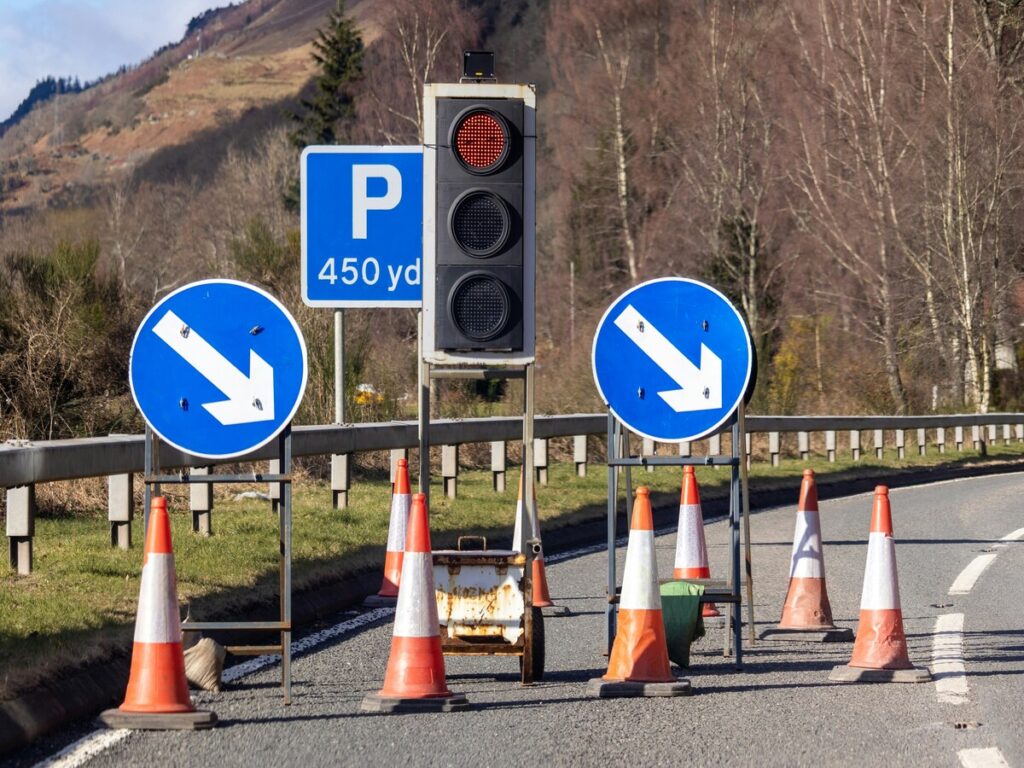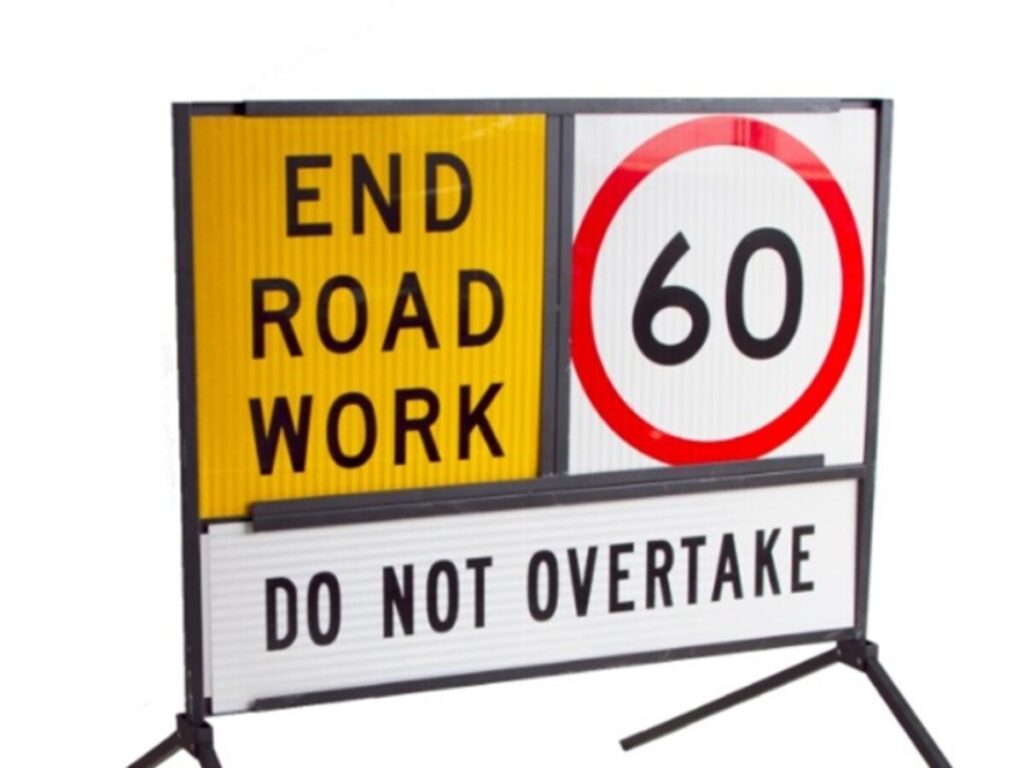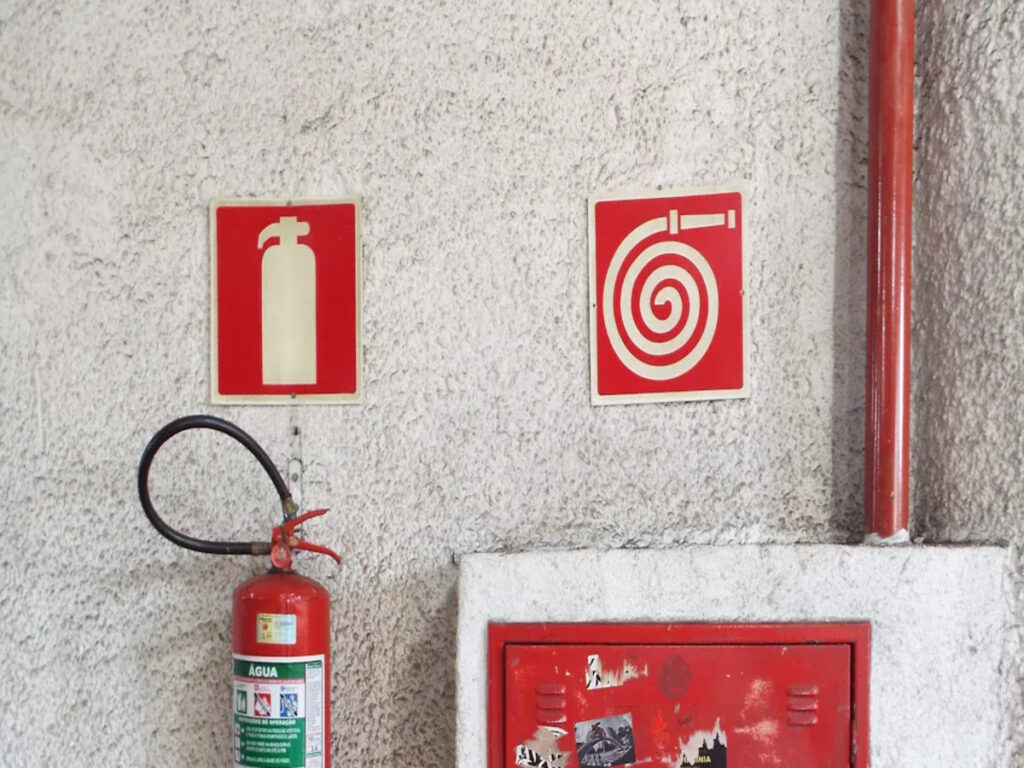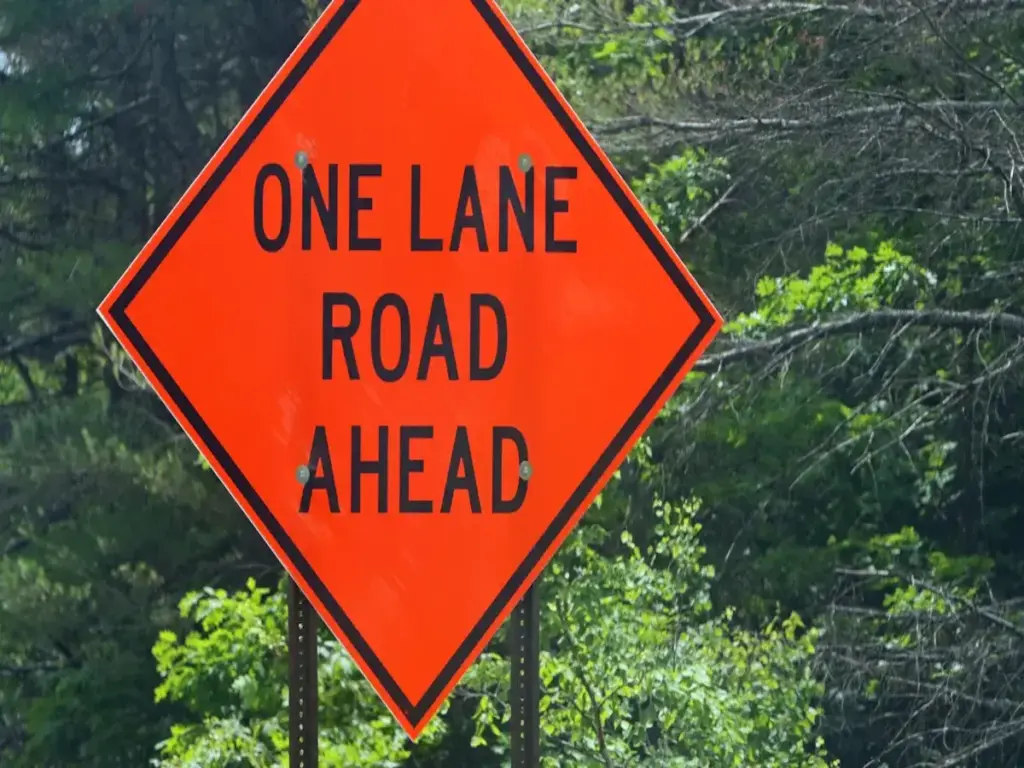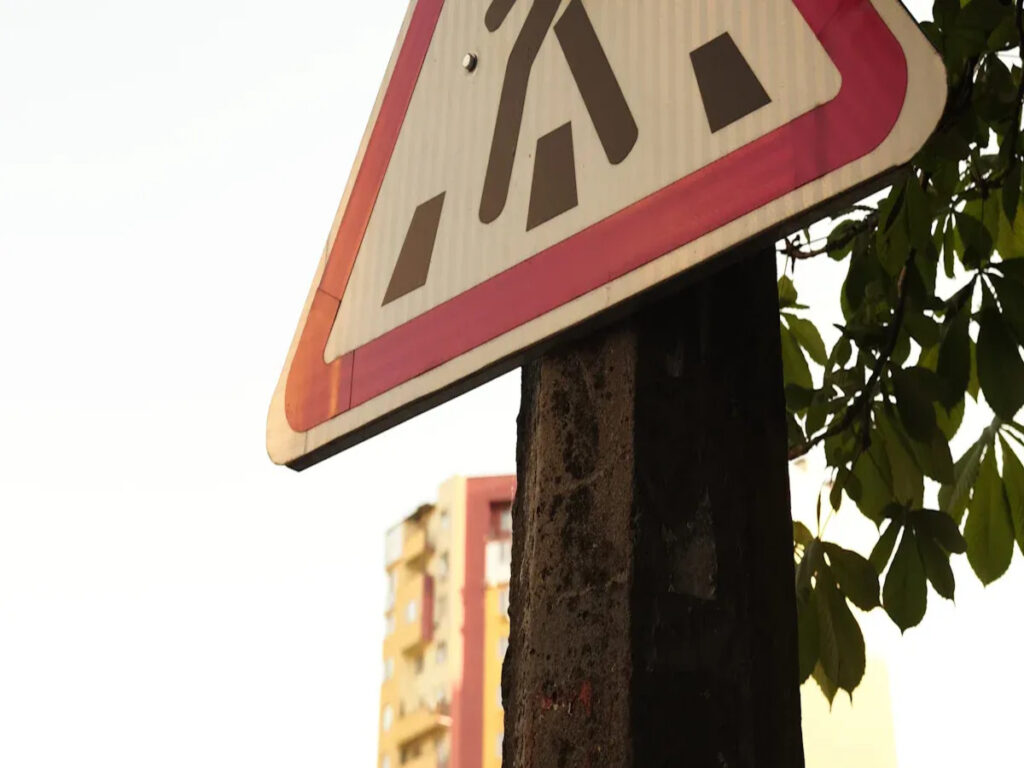
あなたが混雑した街の通りを歩いていると想像してください. 車, バイク, and buses move all around you. You and other vulnerable road users face more danger. This is especially true during evening rush hour. At that time, pedestrian-vehicle conflicts go up by almost 30%. 以来 2010, pedestrian deaths have gone up by 77%. This makes pedestrian safety a bigger worry. Pedestrian safety signs help people notice dangers. They guide everyone who uses the road. These signs help protect vulnerable people. They also help remind everyone to stay safe in cities.
Optrafficは高品質を提供します 歩行者用安全標識 that play a crucial role in reducing these risks. With clear, visible signage and proven traffic management solutions, OPTRAFFIC helps enhance pedestrian safety in busy urban environments, guiding everyone toward safer, より効率的な道路.
キーテイクアウト
- Pedestrian safety signs help keep walkers, サイクリスト, and people with disabilities safe. These signs show dangers and tell people how to use roads safely. High-visibility crosswalks, 収量標識, and school zone speed limits can lower crashes by up to 40%. これにより、誰にとっても街路がより安全になります. Putting signs at busy intersections, 学校の近く, and at eye level helps people see them better. It also makes it easier to follow safety rules. New smart and digital signs change to match real-time conditions. They help drivers and pedestrians react faster and lower crash risks. Cities that use better signs and signals have fewer accidents and injuries. This shows that clear safety signs can save lives.
Vulnerable Road Users and Their Needs
Pedestrians’ Safety Challenges
Walking in busy cities can be dangerous. Most pedestrian crashes happen where there are many cars and people. で 2010, 以上 70,000 people walking got hurt and 4,200 died in U.S. traffic crashes. ほとんど 75% of these deaths happened in cities. Many accidents happen at places with bad signs or faded crosswalks. Bad signal timing can also cause crashes. Using crosswalks helps lower your risk. But older adults and kids are still at higher risk. People in poor neighborhoods face more danger too. You can stay safer by following safety tips and using safe paths. Clear crossings and better sidewalks help everyone stay safe.
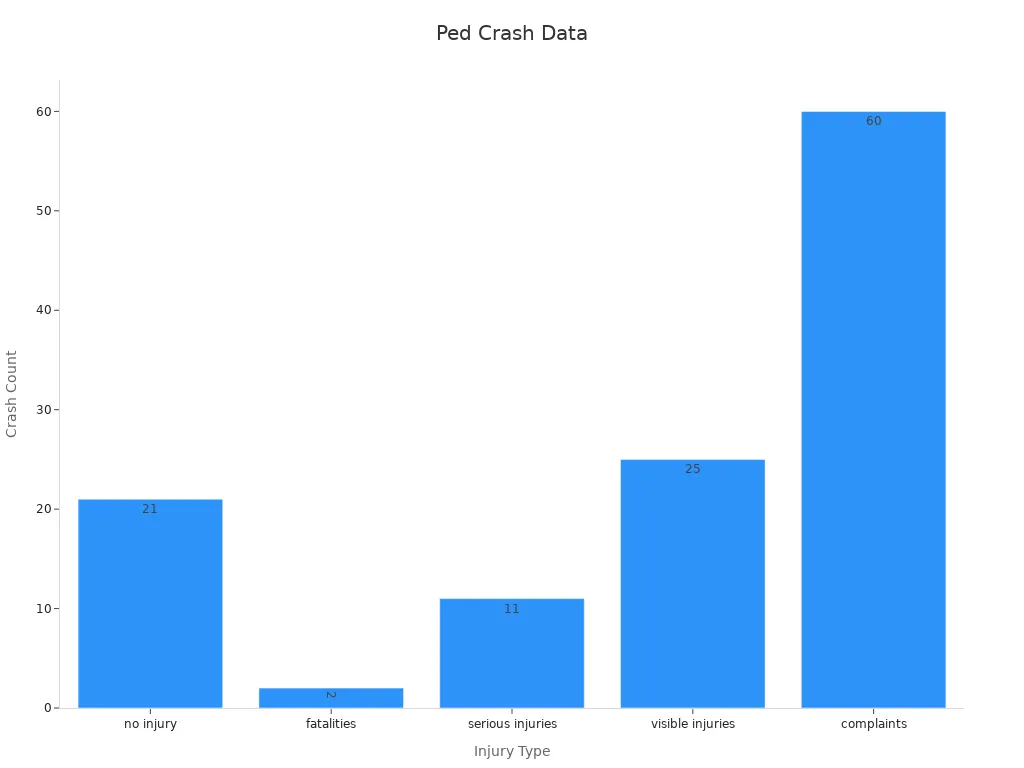
Cyclists and Motorcyclists
Motorcyclists and Cyclists ride near cars but have less protection. Cyclists face dangers from fast cars and rough roads. Signs that are hard to see make it worse. Motorcyclists also have trouble at intersections. Missing or hard-to-see signals add risk. Studies show that road design and time of day matter. Good signals can help, but crashes still happen. Watching for warning signs can keep you safer. Bike lanes are good for cyclists. Cyclists should use crosswalks when they can. These steps help make roads safer for everyone.
Accessibility for People with Disabilities
People with disabilities may find crossing streets hard. Accessible pedestrian signals give sounds or speech to help you cross. Research shows these signals help people with vision problems feel safer. They make it easier to find safe places to cross. 時々, noise or low volume makes signals hard to hear. Changing the volume and adding features can help. Better sidewalks and clear crossings help everyone move around. When cities focus on accessibility, all people can walk and feel safer.
Types of Pedestrian Safety Signs
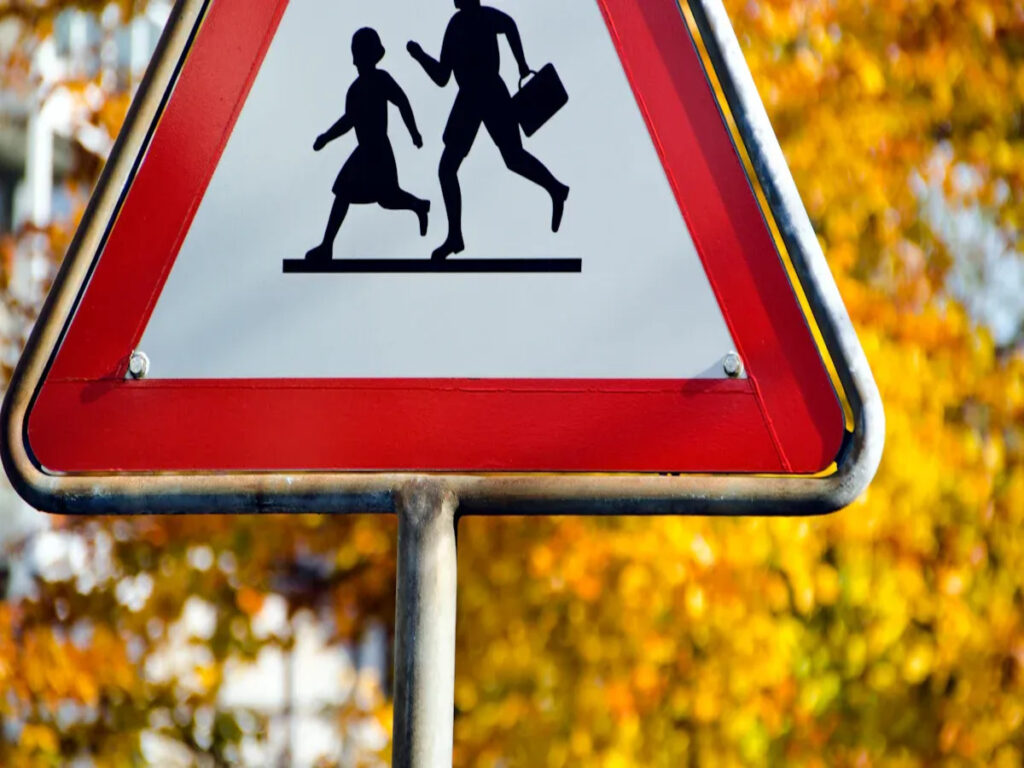
Crosswalk and Yield Signs
Crosswalk and yield signs are at busy intersections. These signs show you where to cross the street safely. They also remind drivers to stop for people walking. High-visibility crosswalks use bright paint or special materials. This helps drivers see them, 夜でも. Advance yield markings and stop signs warn drivers early. Drivers know to slow down before they reach crosswalks.
ヒント: Always use marked crosswalks and cross when it is safe.
A study showed high-visibility crosswalks can lower crashes by 40%. Advance yield or stop markings and signs can cut crashes by 25%. Cities sometimes make roads narrower and add more yield signs. These changes help drivers slow down and stop for people walking. This makes crosswalks much safer for everyone.
| 安全対策 | Reduction in Pedestrian Crashes (%) |
|---|---|
| High-visibility crosswalks | まで 40% |
| Intersection lighting | まで 42% |
| Advance yield or stop markings and signs | まで 25% |
When you use crosswalks and follow signs, あなたは道路を安全に保つのを助けます. Drivers see these signs and know to stop for people at crossings.
School Zone and Speed Limit Signs
School zone and speed limit signs help protect kids and families. These signs are easy to see because they are bright and clear. They tell drivers to slow down and watch for kids crossing.
A study in Calgary found speed limit signs made a big difference. The average speed in school zones dropped from 35.9 km/h to 30.1 km/h. これはにつながりました 78% クラッシュが少なくなります 33% fewer injuries in playground zones. このような兆候を見たとき, you know drivers should slow down and keep everyone safe.
注記: Too many signs in one place can confuse drivers. Cities put signs in the best spots for safety.
Cyclist and Motorcyclist Warning Signs
Cyclists and motorcyclists have special dangers on the road. Warning signs help everyone notice bike lanes, 鋭いターン, or rough roads. These signs use symbols and bright colors so you can spot them fast.
Some signs show where cyclists cross or ride next to cars. These signs remind drivers to stop for people walking and biking. When you ride your bike, look for these signs to find safe paths. Motorcyclists also use signs that warn about curves or slippery roads. These signs help everyone stay alert at intersections.
Accessible and Audible Signals
Accessible and audible signals help people with disabilities cross streets safely. These signals use sounds, speech, or flashing lights to guide you.
- Studies show Talking Signs™ help people with vision problems find the right way and stay on track.
- Animated ‘eyes’ on WALK signals help people with low vision see them from farther away.
- Audible signals help you know when to walk or stop, making crossings safer and faster.
- WALK/DON’T WALK signals can lower pedestrian crashes by 17%.
- Devices that remind you to look for turning cars can cut conflicts by 75%.
These signals help if you have trouble seeing or hearing. Cities keep trying new signals to make crossings safer for everyone.
To explore more about the full range of traffic safety signs and their regulatory standards, 私たちをチェックしてください 交通安全サインのカテゴリと標準の完全なガイド. This comprehensive guide covers everything you need to know about traffic signs, ensuring your site is fully compliant with industry standards and designed to prioritize safety.
Placement and Visibility for Pedestrian Traffic Safety
Optimal Sign Placement
Cities get the best safety results when they put pedestrian safety signs where people need them most. Signs work well at busy intersections, 学校の近く, and on streets with lots of crosswalks. When signs are at eye level and easy to see, you notice them quickly and make safer choices. Studies show that putting more signs in the right spots helps people find crosswalks faster and makes fewer people turn the wrong way. Virtual reality tests also show that good sign placement helps people feel less confused and avoid accidents. If you think the signs look good and trust them, you are more likely to follow them, which helps keep everyone safe.
ヒント: Always look for signs near crosswalks and follow what they say to stay safe.
Retro-reflective and Illuminated Signs
夜に, you need signs that are bright and easy to see. Retro-reflective signs shine when car headlights hit them, so you can spot them in the dark. Cities that switched to these signs saw up to 38% fewer crashes at night. Research also shows that bright crosswalk paint and light-up signs help drivers see you sooner. 例えば, LED lights and flashing beacons make crosswalks much safer after dark. Older drivers need brighter signs because they need more light to read them. When you walk at night, these signs help you cross the street safely.
| Study/Author(s) | Key Findings Related to Sign Visibility and Lighting |
|---|---|
| Garvey et al. (2011) | Light-up signs are 40%-60% easier to read at night. |
| ゲイツら. (2004) | Bright colors and red edges make signs stand out day and night. |
| Sioux City Crash Study | Reflective stop signs cut nighttime crashes by 38%. |
Digital and Dynamic Signage
Cities now use digital signs to give you real-time updates. LED signs can change their message if traffic or weather changes. These signs use bright colors and moving words to get your attention. Studies show that digital signs help drivers and walkers react faster, つまり、事故が少ないことを意味します. You might see a flashing beacon or a sign that says “yield to pedestrians” when someone is waiting. Digital signs also save money over time and work well in busy places. They help you stay alert and make good choices at crosswalks.
注記: Digital signs can change right away, so you always see the newest safety messages.
ケーススタディ: Improve Pedestrian Safety

City Success Stories
Cities all over the world use better signs to help people stay safe. ラスベガスで, crossing flags made drivers notice people crossing the street. More drivers stopped, so streets became safer. New York City used ビジョンゼロ and put up new signs and signals. After these changes, fewer people died while walking. The number of deaths dropped by almost 30% 以来 2013. At intersections with Leading Pedestrian Intervals, crashes between cars and people walking went down by more than half. Fremont, California also used Vision Zero. The city had 38% fewer crashes with people walking. For kids under 16, クラッシュが立ち寄った 92%.
| City/Intervention | 結果 |
|---|---|
| ラスベガス (crossing flags) | Increased driver yielding, safer crossings |
| NYC (ビジョンゼロ) | 30% 歩行者の死亡事故が減る, 50% fewer collisions at treated intersections |
| Fremont, ca (ビジョンゼロ) | 38% 歩行者のクラッシュが少ない, 92% fewer youth crashes |
Other cities use flashing beacons and reflective signs to help drivers see people better. These signs work well at night or on busy streets. When you walk or ride a bike, these signs help keep you safe. They also remind everyone to watch out for each other.
Before and After Signage Data
You can see how new signs help by looking at crash numbers before and after they are put up. When cities added Rectangular LED Rapid Flashing Beacons, more drivers stopped for people crossing. At one place, driver yielding went from 0% に 65%. At another, it went from 1% に 92%. This made walking safer and lowered the number of crashes.
The HAWK pedestrian crossing treatment worked very well. After these signs were installed, total crash rates dropped by 35%. Crashes with people walking dropped by 86%. Places without these signs did not get much better and sometimes had more crashes.
| 測定 | インストールの前に | インストール後 | パーセントの変更 (%) |
|---|---|---|---|
| Total crash rate (IR crashes) | 0.341 | 0.223 | -35% |
| Pedestrian crash rate (IR crashes) | 0.017 | 0.002 | -86% |
| Total crashes (statistically significant reduction) | n/a | n/a | -29% (95% confidence) |
| Pedestrian crashes (statistically significant reduction) | n/a | n/a | -69% (95% confidence) |
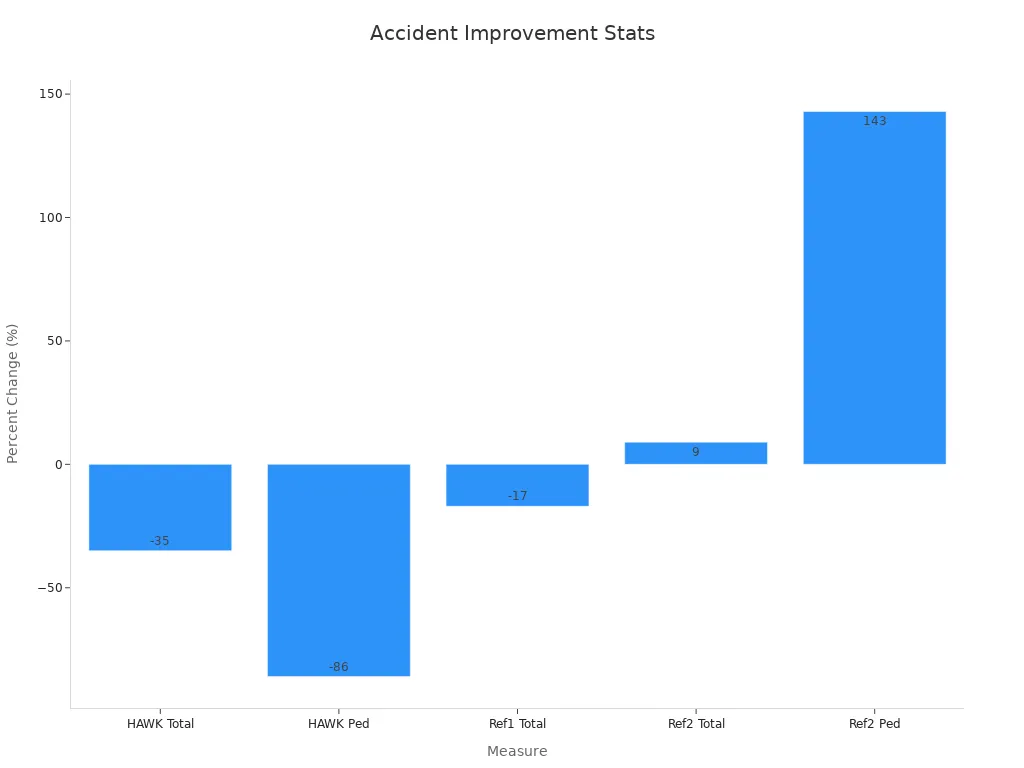
You can see that better signs do more than just warn people. クラッシュを減らすのに役立ちます, stop collisions, and help everyone in your community stay safe.
Technological Advances in Pedestrian Safety Signs
Smart and Adaptive Signs
Many cities now have smart and adaptive signs. These signs use sensors and real-time data to change messages or lights. If more people wait at a crosswalk, the sign gives extra crossing time. When it is dark or rainy, the sign shines brighter. Smart signs help you cross streets faster and safer. They also help drivers see you better during busy times. Studies show these signs lower injuries and help traffic move better. Cities with smart signs have fewer accidents and less traffic.
| Pedestrian Safety Treatment | Crash Modification Factor (CMF) | Interpretation of CMF (Lower is Better) |
|---|---|---|
| 歩行者用ハイブリッドビーコン (PHB) | 0.453 | Highest reduction in pedestrian crash risk |
| PHB + Advanced YIELD or STOP Markings and Signs | 0.432 | Even greater reduction when combined |
| 長方形の急速な点滅ビーコン (rrfbs) | 0.526 | Significant reduction in crash risk |
| Pedestrian Refuge Islands | 0.685 | Moderate reduction in crash risk |
| Advanced YIELD or STOP Markings and Signs | 0.75 | Traditional treatment with positive effect |
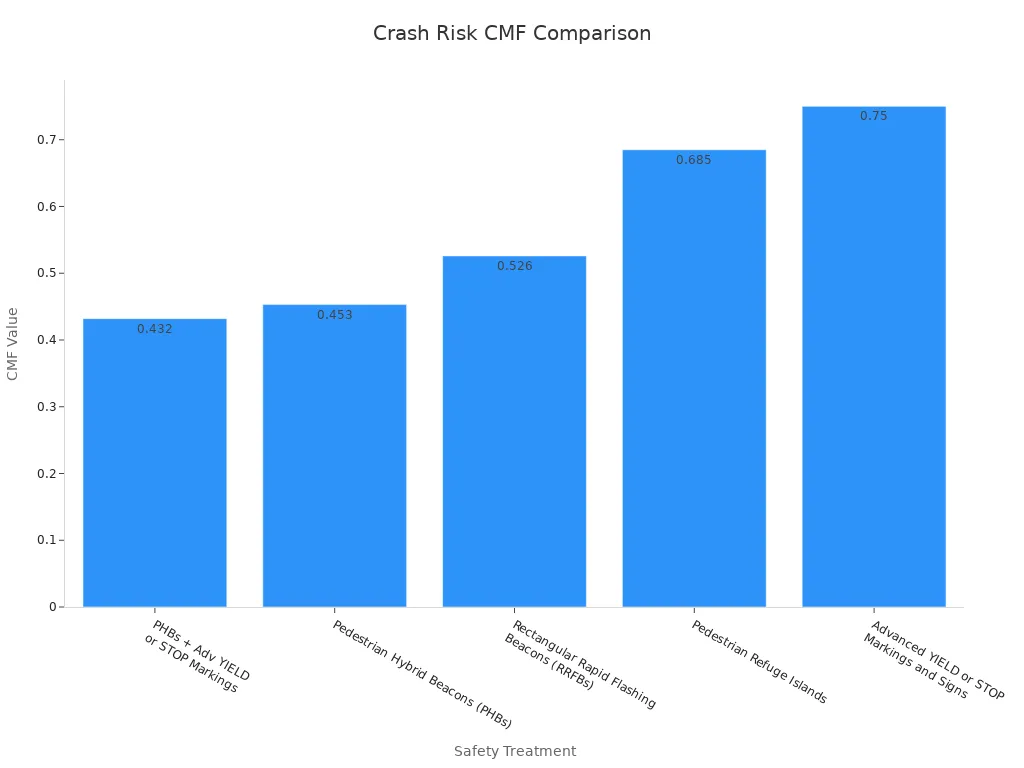
The table and chart show that PHBs and RRFBs lower crash risks more than older signs.
Pedestrian Detection Systems
Pedestrian detection systems use cameras and sensors to find people near roads. These systems can warn drivers or change traffic lights when you step into a crosswalk. Some cars have these systems to help stop crashes. You are safer because these systems react fast, even if a driver does not see you.
Here are some ways experts check how well these systems work:
| メトリック | 説明 | Formula / 説明 |
|---|---|---|
| 精度 | Correctly predicted positive samples to all predicted positive samples | Precision = TP / (TP + FP) where TP = True Positives, FP = False Positives |
| 想起 | Correctly predicted positive samples to all actual positive samples | Recall = TP / (TP + FN) where FN = False Negatives |
| F1-score | Harmonic mean of precision and recall, balanced accuracy | F1 = 2 × Precision × Recall / (精度 + 想起) |
| Average Precision (AP) | Area under the Precision-Recall curve | AP = ∫₀¹ P(R) dR where P(R) is precision at recall R |
| Mean Average Precision (mAP) | Average of AP values across categories | mAP = (1/N) ∑ AP_i where N is number of categories and AP_i is AP for category i |
These systems help keep you, サイクリスト, and others safe by giving real-time alerts and making roads smarter.
Integrated Smart City Solutions
Cities now use smart technology to connect traffic lights, サイン, およびセンサー. These smart city solutions collect data to make roads safer for everyone. You may notice shorter wait times at crosswalks and smoother traffic. シドニーで, a smart system called SCATS led to fewer stops and shorter travel times. Air pollution also went down. In Farmington Hills, smart LED streetlights saved energy and made streets safer at night.
- Sydney’s SCATS system led to fewer stops.
- Travel time was cut by more than a third.
- Carbon dioxide emissions went down.
- Nitric oxide emissions dropped.
- PM10 emissions also dropped.
- Farmington Hills’ Intellistreets lighting saved energy and made walking safer.
Smart city solutions help you cross streets safely, breathe cleaner air, and wait less. These advances show how technology can make cities safer and more comfortable for everyone.
You help make streets safer for everyone. Pedestrian safety signs and new signals lower crash rates. They also help people pay more attention to safety. Cities that use these tools have fewer injuries. Walking in these places is easier and safer. 例えば:
| 介入 / 位置 | Impact on Pedestrian Injuries/Crashes | 追加のメモ |
|---|---|---|
| Pedestrian safety islands, ニューヨーク市 | Injuries went down by 35% に 58%. Pedestrian crashes dropped by 67%. | Slower traffic made speeding drop by 29%-32%. |
| シアトル, の (Rainier Street corridor) | Pedestrian collisions went down by 9%. Injury collisions dropped by 30%. | Speed limit changed from 30mph to 25mph. Signal timing got better. |
| Pedestrian countdown signals (デトロイト, シャーロット, トロント) | Studies show fewer pedestrian-motor vehicle crashes and less severe injuries. | Police reports gave data over many years. |
You can help by following safety rules when you walk. Share safety tips with others. Support new safety ideas in your town.
よくある質問
What makes a pedestrian safety sign effective?
A good pedestrian safety sign uses bright colors and clear symbols. You can see it easily, 夜でも. The sign should be at eye level and placed where you need to make safe choices.
How do audible signals help people with disabilities?
Audible signals use sounds or speech to tell you when to cross. If you have trouble seeing, these signals help you know when it is safe to walk.
Why do cities use digital pedestrian signs?
Cities use digital signs to give you real-time updates. These signs can change messages quickly. You get the latest safety information, which helps you make better decisions.
Where should cities place pedestrian safety signs?
Cities should put signs at busy intersections, 学校の近く, and at crosswalks. Signs work best where many people walk or ride bikes.
Can better signs really lower accidents?
はい! Studies show that better signs can lower crashes by up to 40%. When you see and follow these signs, you help keep everyone safer.



